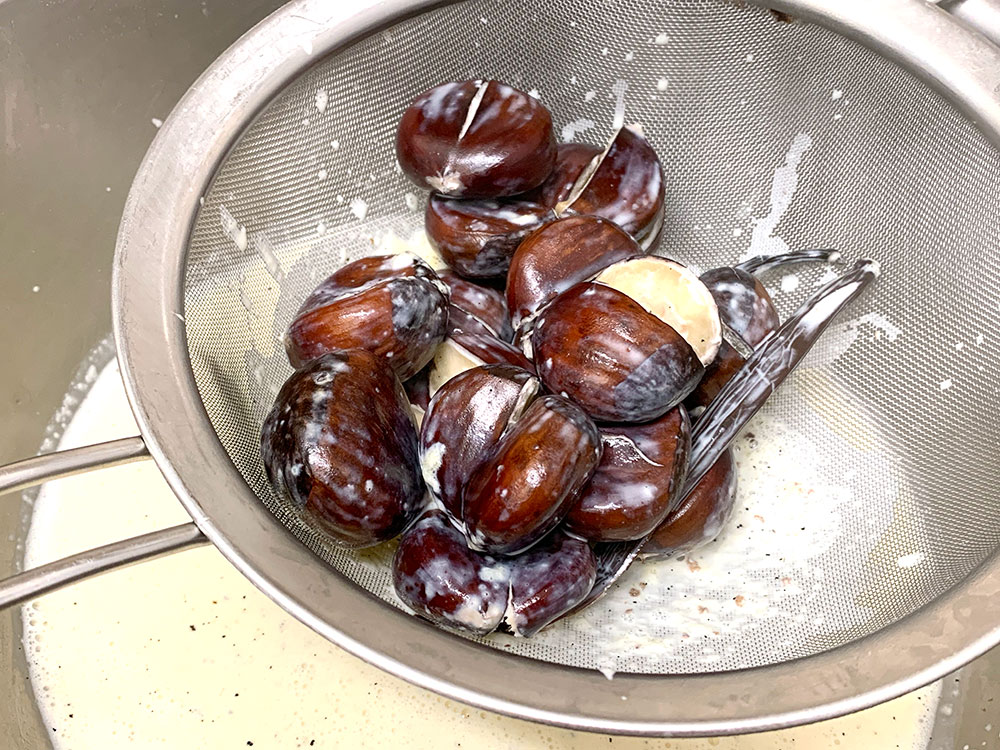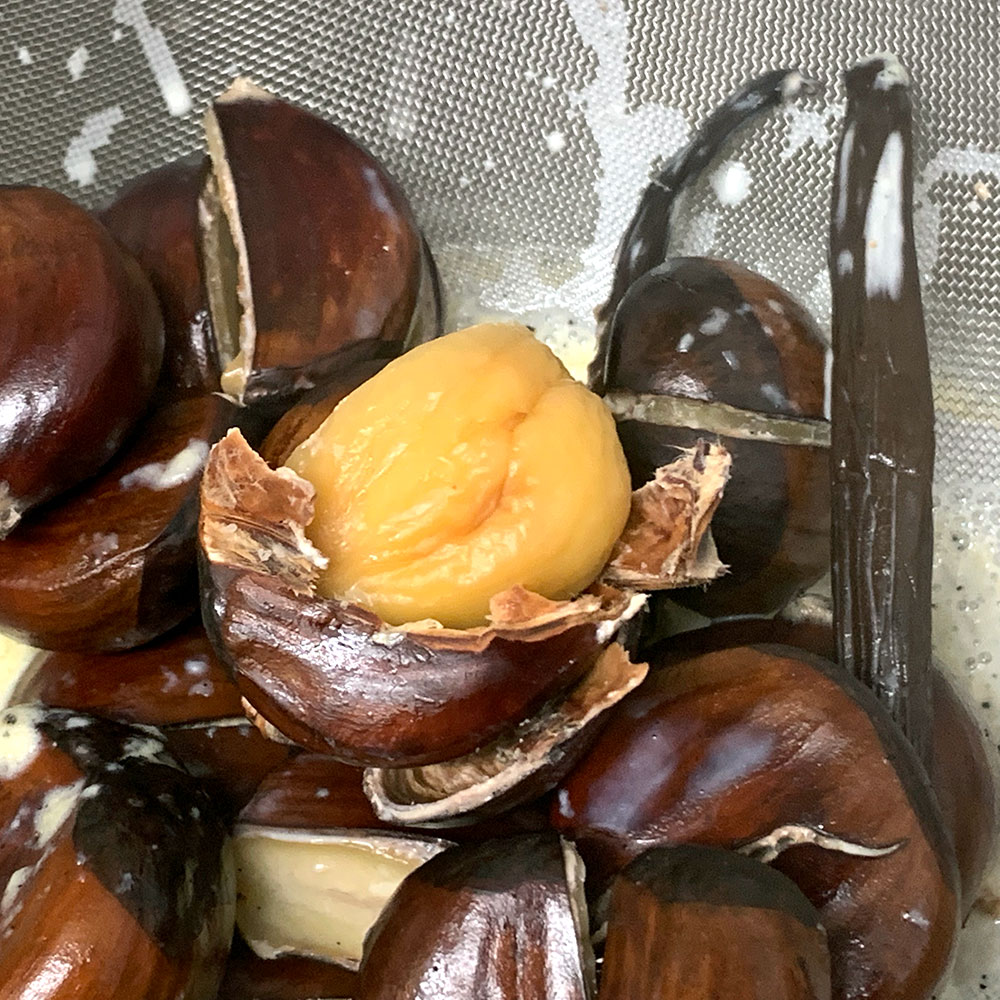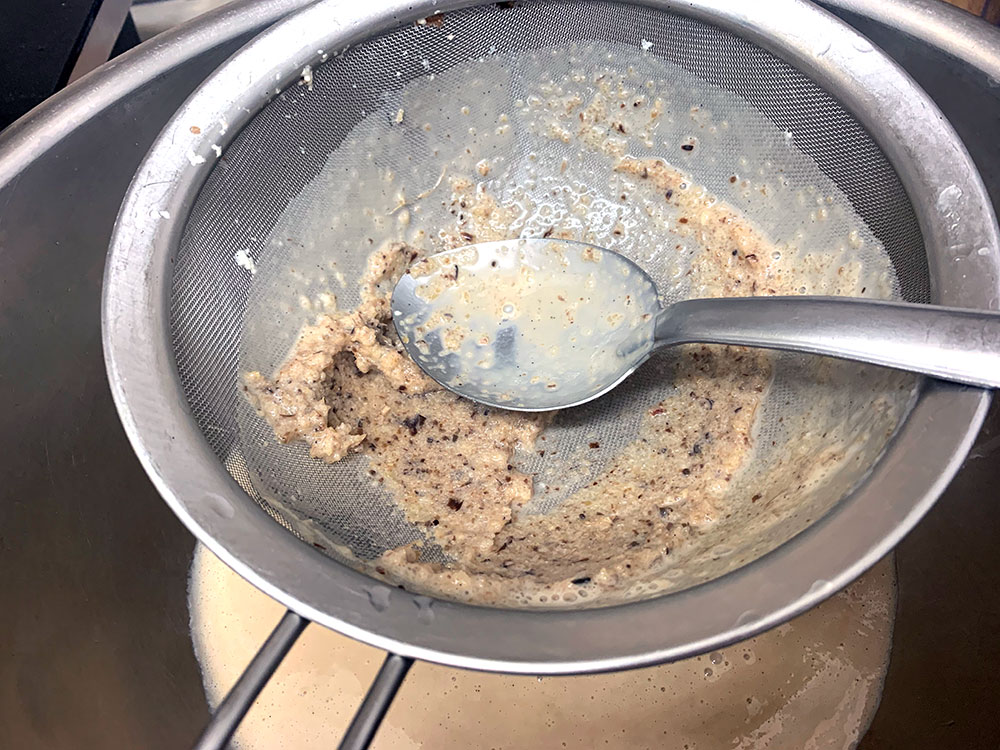chestnut ice cream
Makes approximately 1L
This recipe is written for induction and a Thermomix or MyCook…also please refer to
purchasing and storing chestnuts…click here
posted 20 June, 2019….new recipe, supersedes all other chestnut ice cream recipes

stage one…induction required
250g chestnuts
1 vanilla bean, split and scraped
500g full cream milk
500g pouring cream
stage two…Thermomix or MyCook required
300g caster sugar
8 egg yolks [from 61g eggs minimum or adjust small eggs add another egg yolk]
stage one
Make two long deep slits in each chestnut. The selection of the right sized pot is important you want the chestnuts to be pretty much submerged. Weigh the milk and cream into a saucepan and add the chestnuts and vanilla pod and seeds.
Cook covered for one hour 15
minutes @ 800W 80°C…stir over every 15 minutes always making sure that the vanilla pod is pushed under the dairy.
While the chestnuts are still quite warm pull away the outer brown skin and proceed to stage two while they are still warm.
If you get delayed and they become cold you will need to warm them again because the second skin will have stuck to the chestnuts.




stage two
Put the chestnuts into a Thermomix or MyCook and add all of the ingredients including the vanilla pod. Purée until very fine. Add the egg yolks and sugar and mix well. Set the heat to 80°C and on stir bring the mix to temperature to ensure the egg is safely cooked.
Blitz everything again and then, strain through a hair sieve in small batches, pressing hard against it and making sure that you get all of the vanilla seeds into the ice cream. Chill and churn.
purchasing and storing chestnuts
Telling the quality of a chestnut is perhaps easier than with most fruit. Chestnuts have a very high-water content – fifty percent. Fresh chestnuts will still fill the shiny brown outer skin, were as when they have been picked longer if you push against the skin, you will start to feel a noticeable separation/space between the outer skin and the nut inside. The chestnut is a food that should be purchased at its best, and consequently at its most expensive. If you’re going to use them within a week or two, and, provided that you have bought them in premium condition, wrap them tightly in a compostable bag and refrigerate. For longer storage, buy the best, freeze them in spring water, thawing them out slowly in the fridge. The best of the season will be over the next two to three weeks.

